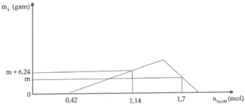* Read the following passage and mark the letter A, B, C, or D on your answer sheet to indicate the correct answer to each of the questions from 24 to 30.
MEGACITY: A NEW KIND OF CITY
A term 'megalopolis' (or megacity) was first used by French geographer Jean Gottman to describe the north-eastern United States in 1961. The term is used more widely now and is defined as an urban area of more than 10 million inhabitants dominated by a low-density housing. In 1995 there were 14 megacities. By 2020 there could be 30.
Megacities are the result of the process of urbanization. After cities grew into crowded urban centres, people who could afford to move into suburbs at the edge of the city. When the suburbs in turn became crowded, people moved into villages and dormitory towns outside the city, but within commuting distance. In this way, for the first time since industrialisation, the countryside began to gain population, whereas cities lost their inhabitants. In the 1980s St Louis and Detroit in the America lost between 35 and 47 per cent of their populations and London lost 15 per cent in the 20 years to 1971.
However, this movement away from cities does not mean that the city is dying. In fact it is spreading. From the old city develops a metropolitan area with many low-level urban developments. When these metropolitan areas merge together, they form megacities which contain over 10 million people. The largest of these is in America, called Boswash - a region over 300 miles long from Boston in the north to Washington, DC in the south with more than 44 million people. There are emerging megalopolises in Britain centred around London and the south-east, in Germany in the industrial region of the Ruhr and Japan in the Tokyo-Osaka-Kyoto region.
(adaptedfrom Archive IELTS (2013), Louis Harrison et al., Cengage Learning)
The word "spreading" in paragraph 3 is closest in meaning to______.
A. lessening
B. shrinking
C. decreasing
D. expanding



